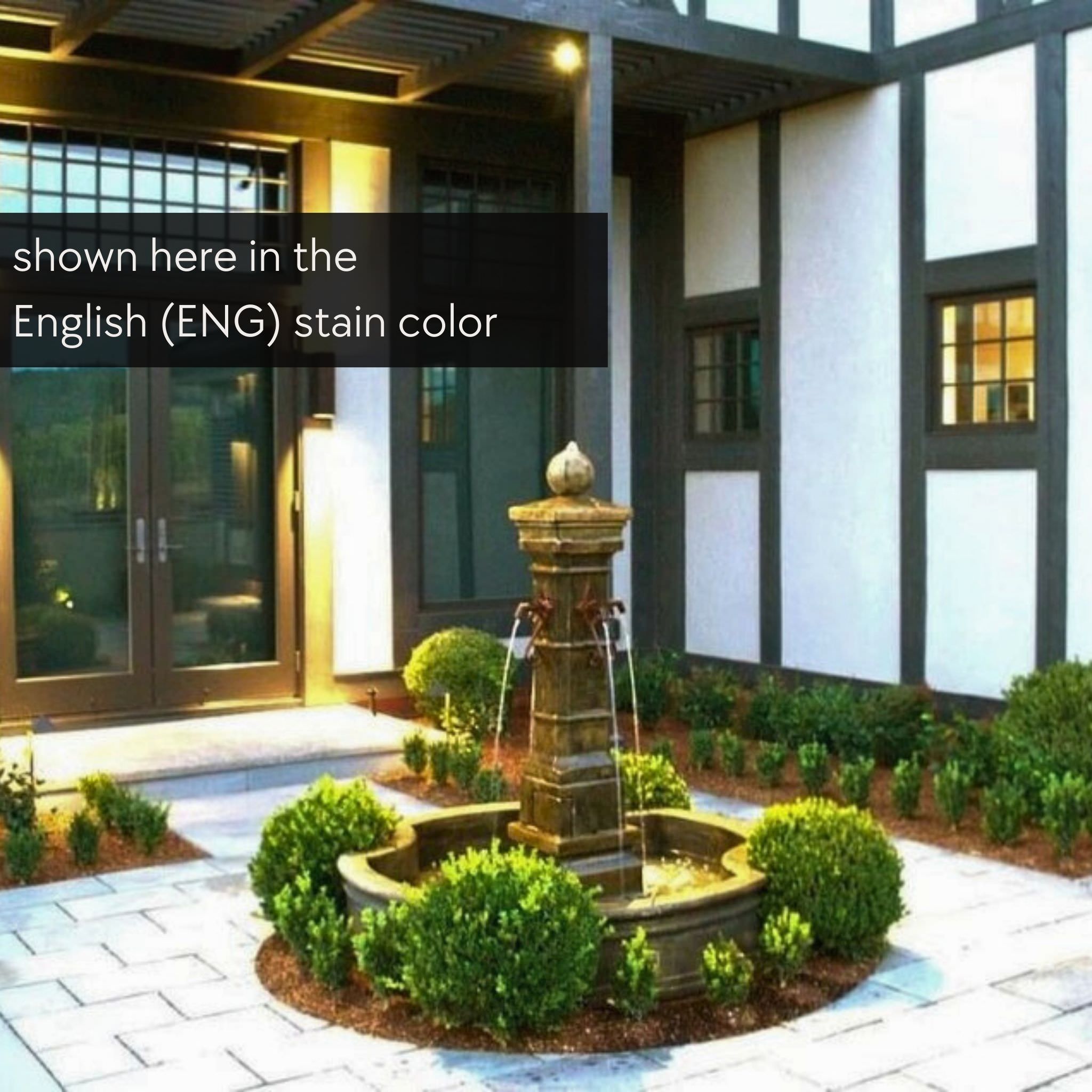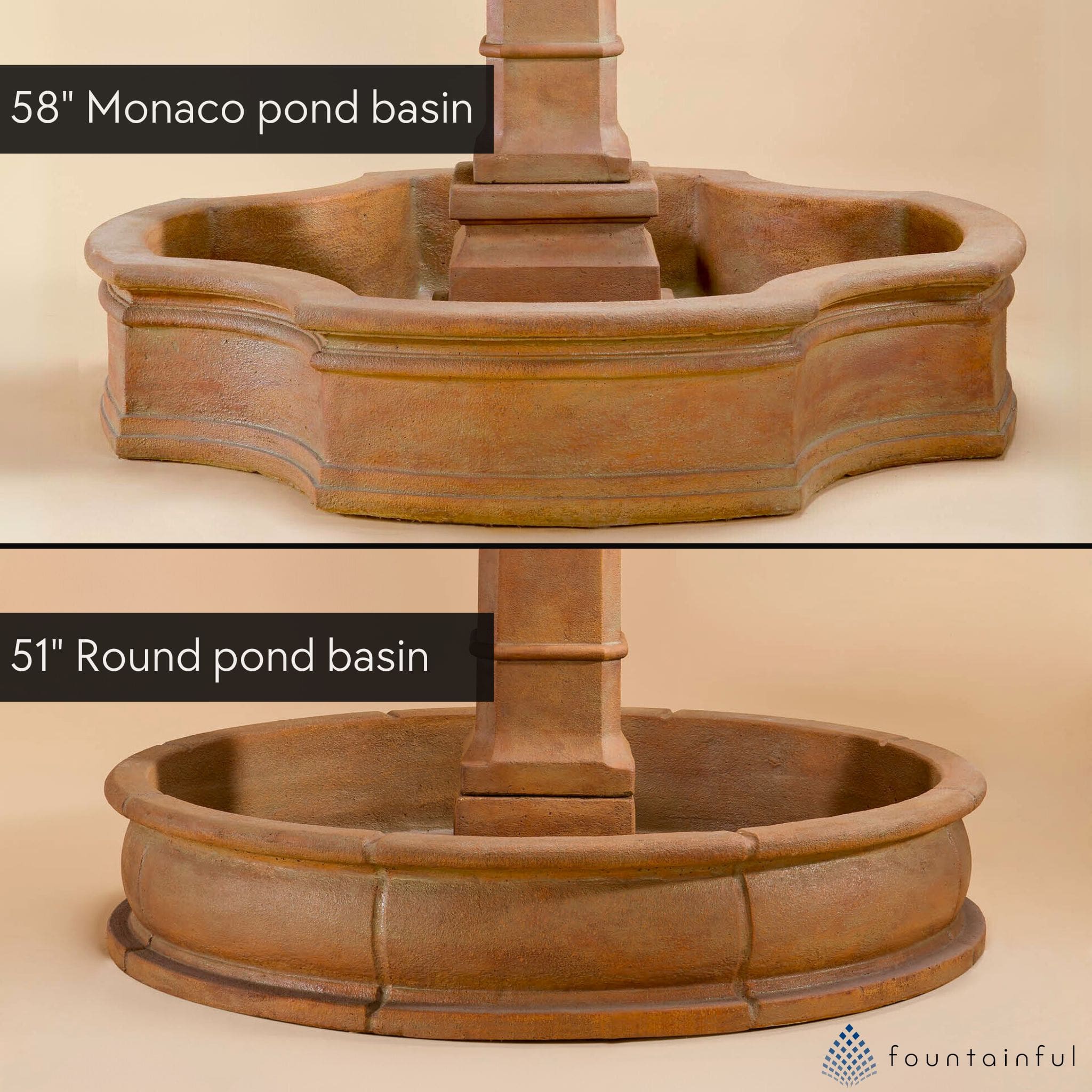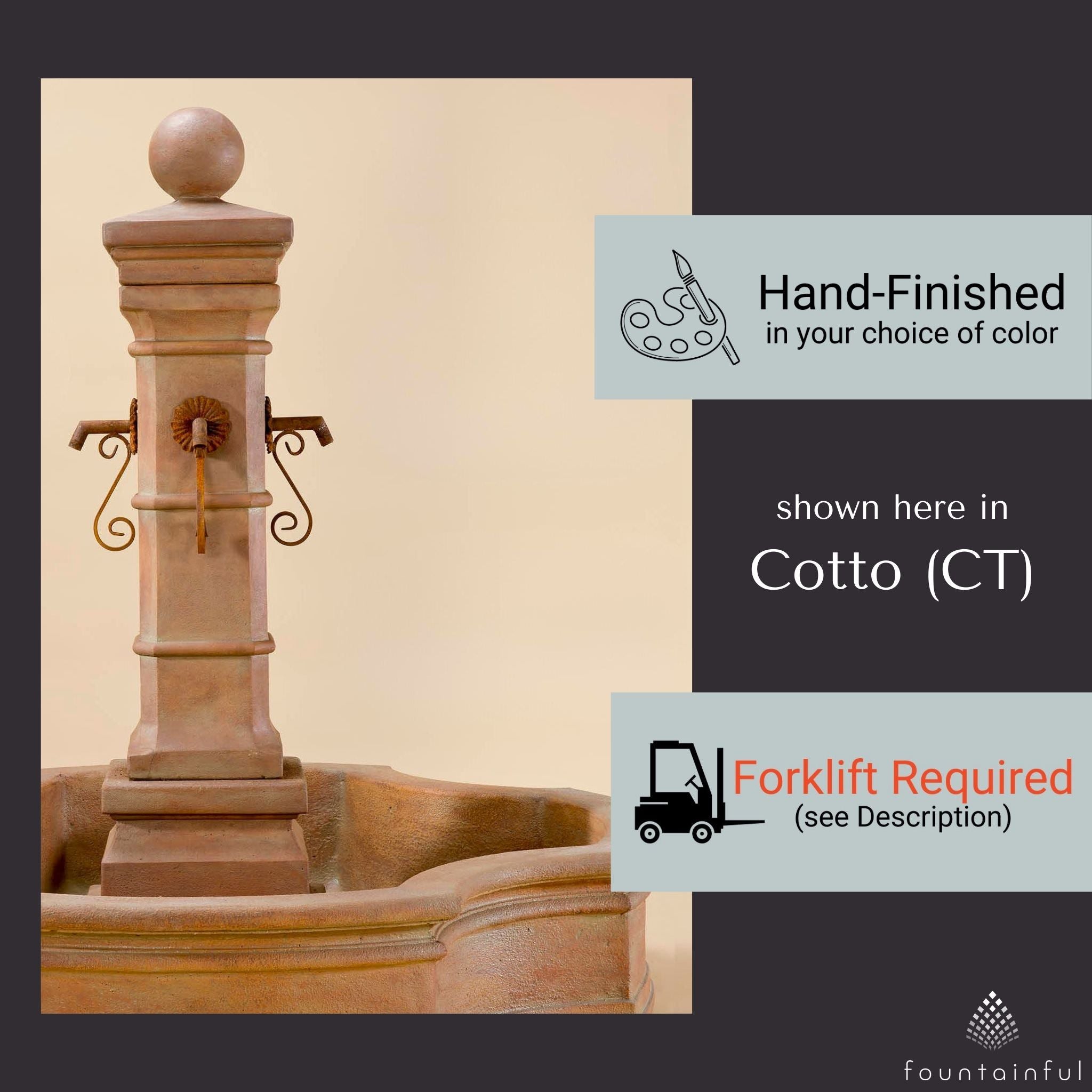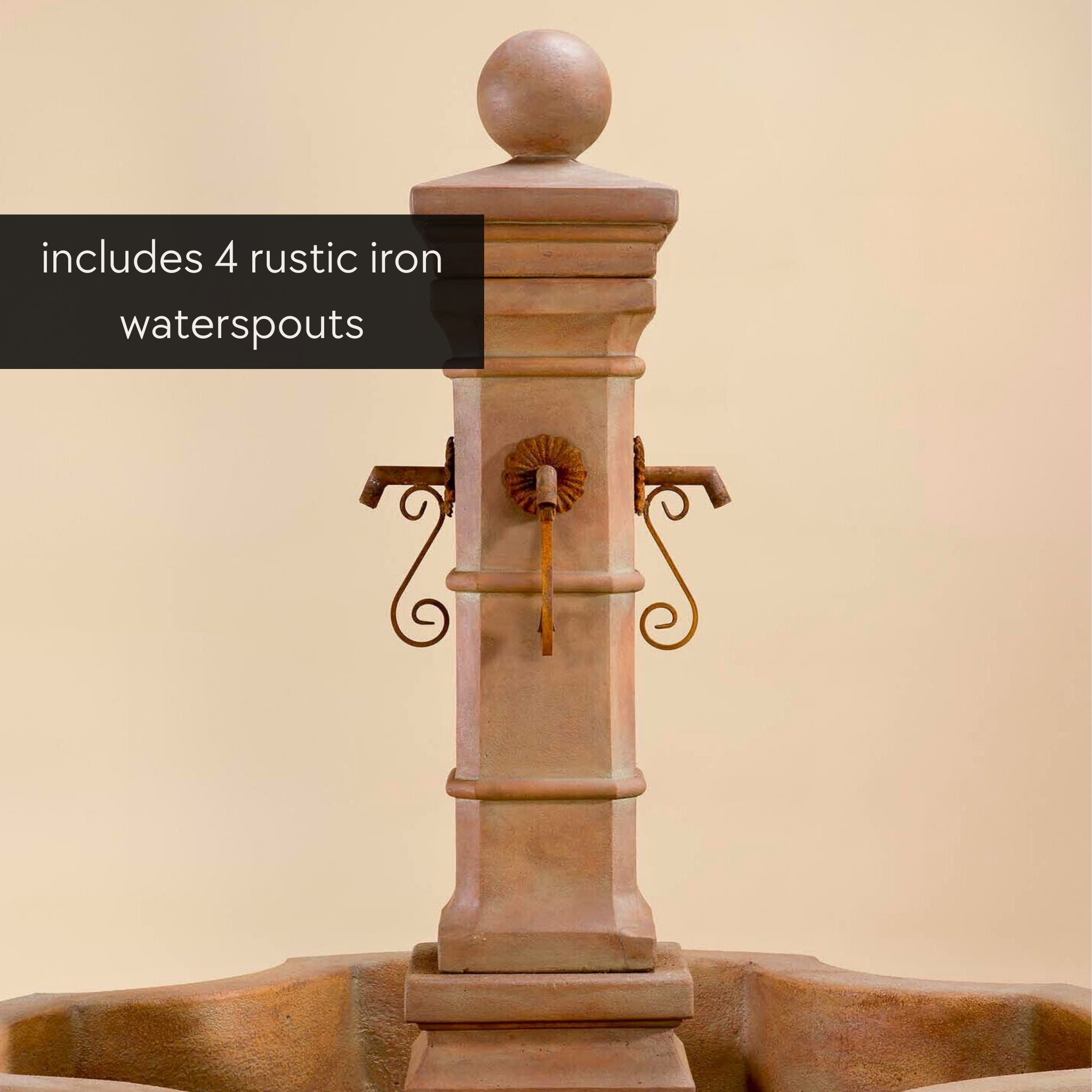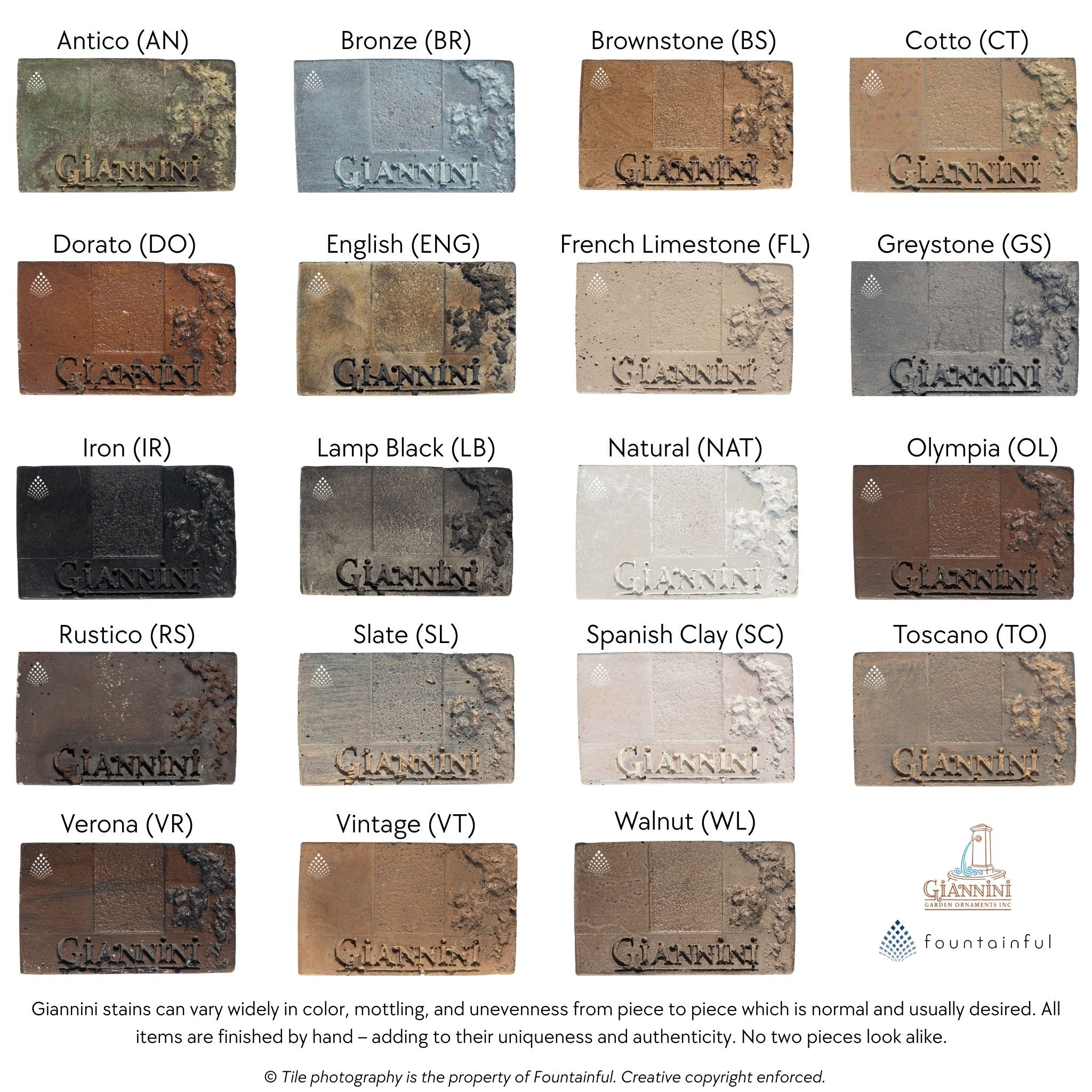Fountain Safety
Traditional fountains have no interlocking components and are held together by gravity. Gluing/cementing parts together is not recommended as they may need to be dismantled to replace the pump, hardware, or to relocate the fountain.
⚠️ CAUTION: Excessive weight or pressure on a concrete fountain may cause it to fall. Keep children & others from climbing, sitting, or leaning on the fountain.
Placements
Benches
Nestle into pea gravel for the ultimate support. Otherwise, any stable surface will work.
Birdbaths - Statuary - Planters
Nestle into pea gravel for the ultimate support. Otherwise, any stable surface will work.
A concrete foundation will provide solid support when needed.
Fountains
Non-basin tiered fountains
- A concrete fountain must be placed on a level and firm surface and not raised off the ground more than the inch or two that would occur if using a foundation.
- An authorized Giannini foundation will additionally help prevent unplanned erosion from the weather, sprinkler system, and fountain splash.
- For both safety and optimal performance, do not place fountain on a pedestal or riser, unless included as part of the fountain design.
Wall Fountains
- If recessing the fountain into a wall or structure, use professional contractors who understand concrete expansion principles and the required joint spacing and materials to help with the buildup of stress when concrete naturally expands and contracts seasonally.
- Giannini wall fountains have a steel bar along the back, near the top. The fountain should be secured to a wall with galvanized wire, chain, etc.
Basin/Pond Fountains
- It is recommended to install these on a thin layer of sand (between 0.5" and 1.0" in depth) on top of a concrete slab to aid in self-leveling and to help prevent stress cracks.
- Review Giannini Pad Guidance for Pond Fountains



